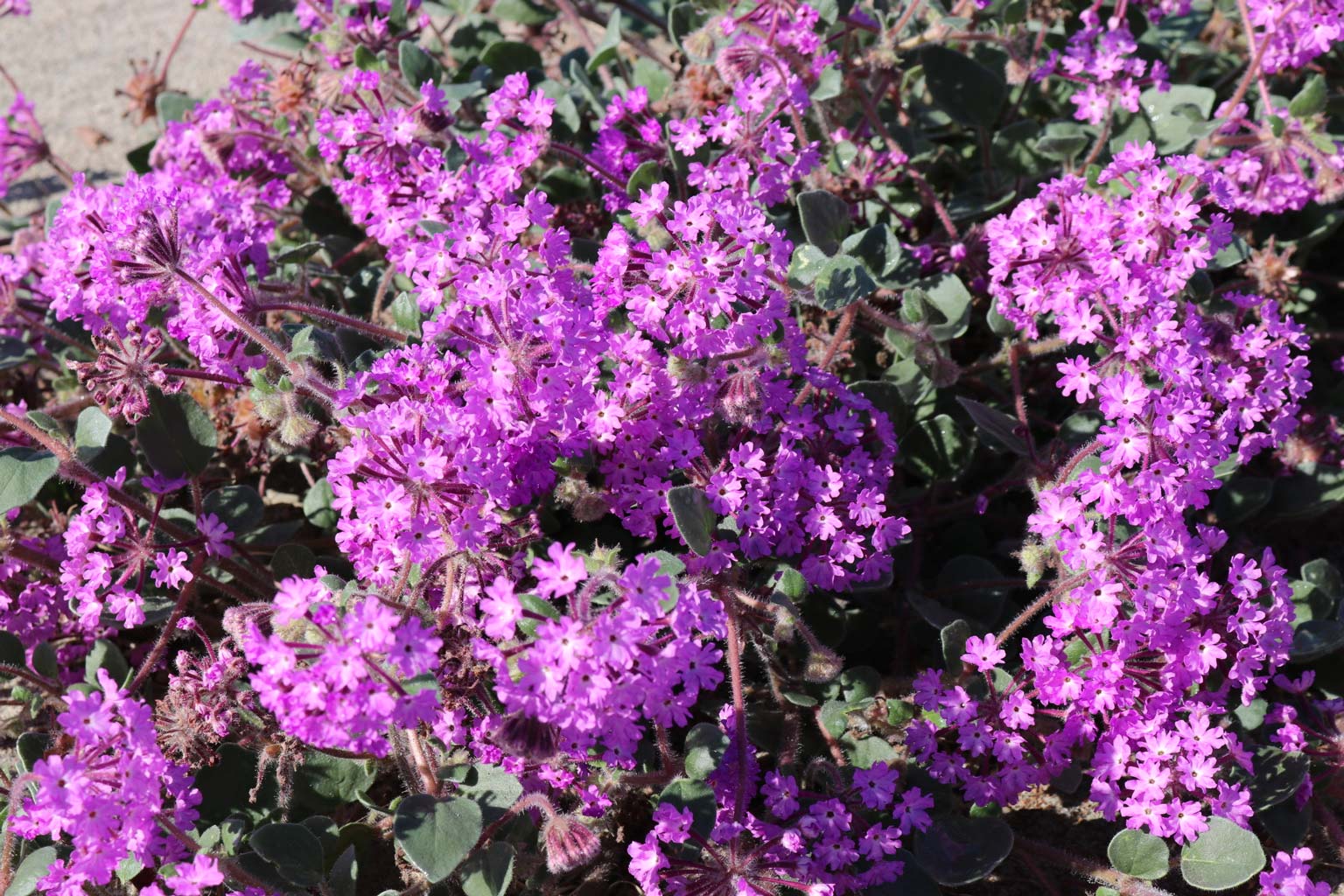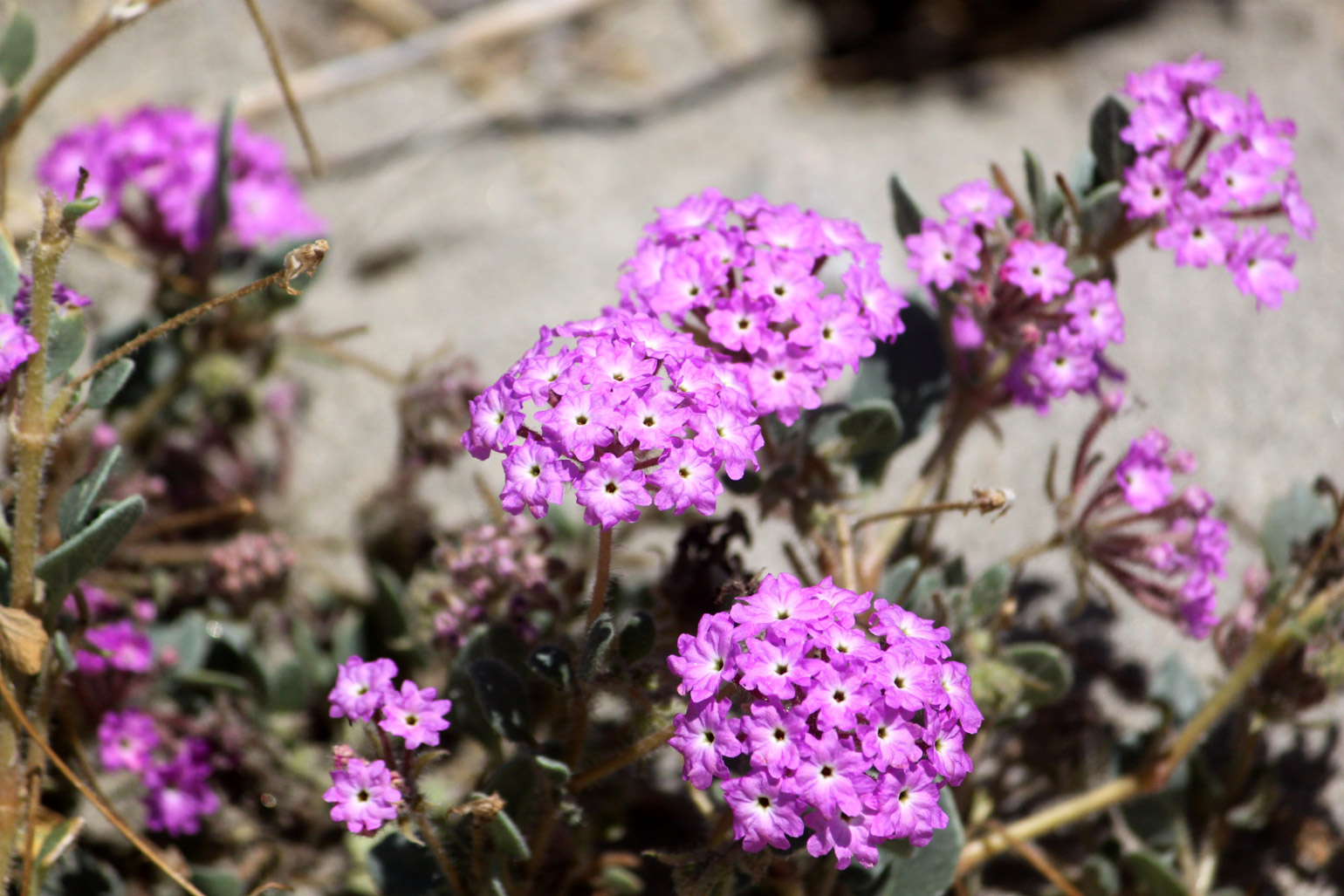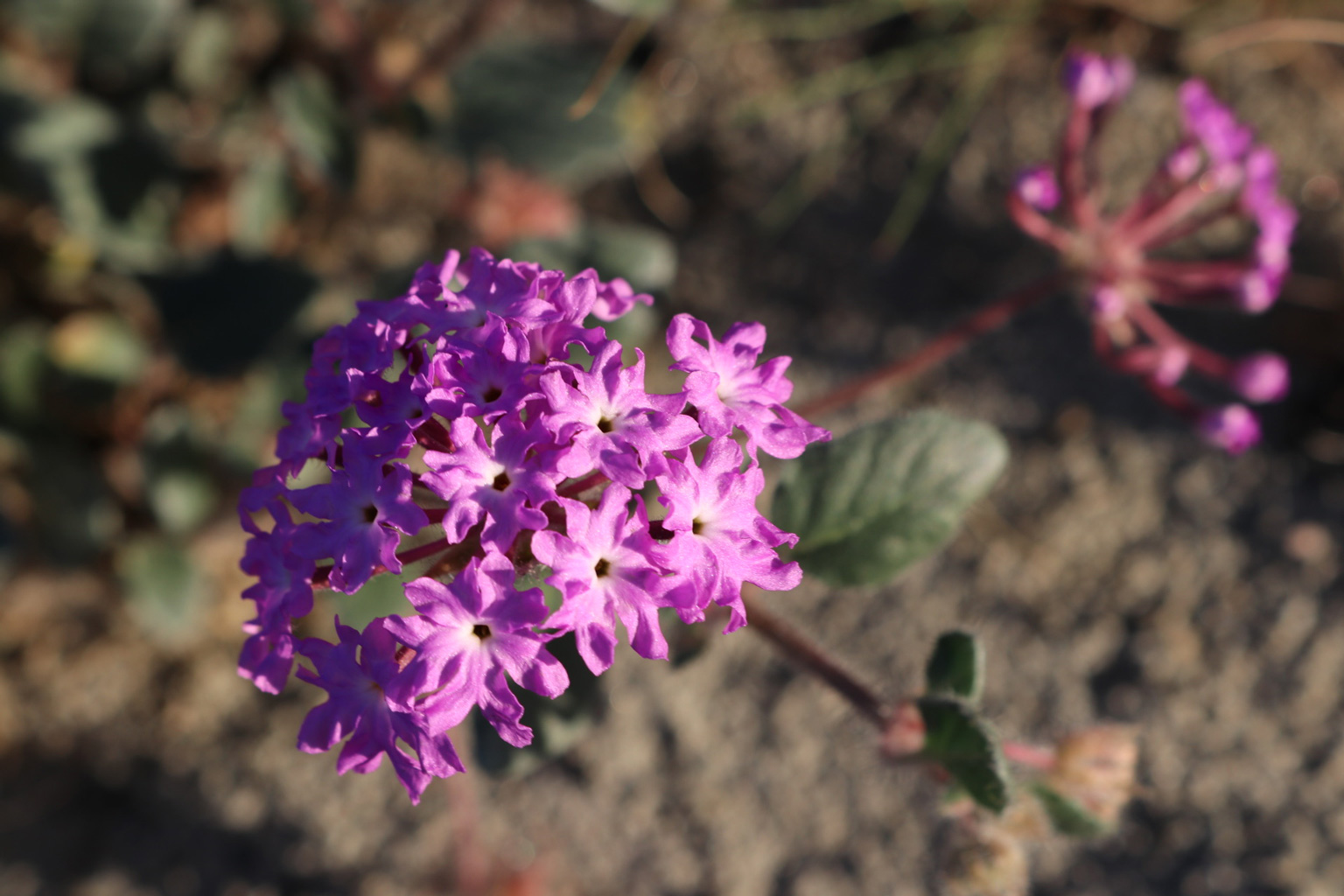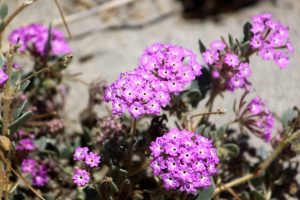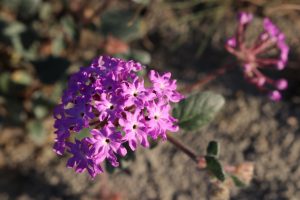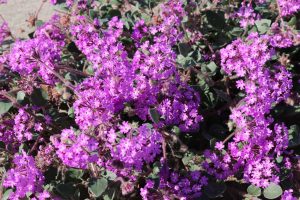One of the most familiar desert wildflowers is the Sand Verbena. It is very successful in disturbed areas as well as in dunes and other desert spaces. If heavy rains occur in the months leading up to the bloom season, it is likely that Sand Verbena will dominate the fields and sandy lots throughout the desert. Each plant can expand up to 3 feet and in good seasons create a purple carpet across sandy fields. It is quite often intermixed with Dune Primrose, which is also in the wildflower field.
The name Abronia means “graceful” in Greek and describes the delicate dome-shaped flower clusters. The Abronia villosa will start blooming in spring and at high elevations may continue into June. Sometimes it can begin blooming as early as November.
Western North America is home to all 25 known species of Sand Verbena that range from coastal to desert sand dune ecosystems, including washes and coastal dunes. They can grow in other habitats, but these are primary.
The Wildflower Field
The wildflower field at Sunnylands is overseeded annually with native wildflowers and bunch grasses. This provides visitors with a view of the larger cyclical bloom cycles that we have in the desert. Starting in February, a variety of native species and bunch grasses begin emerging. Each year the vegetation varies slightly, depending on which seed dominates the space. The field can range in color from purples to oranges, whites, and pinks, with a variety of combinations. We cannot guarantee that all wildflowers will be present each year.
